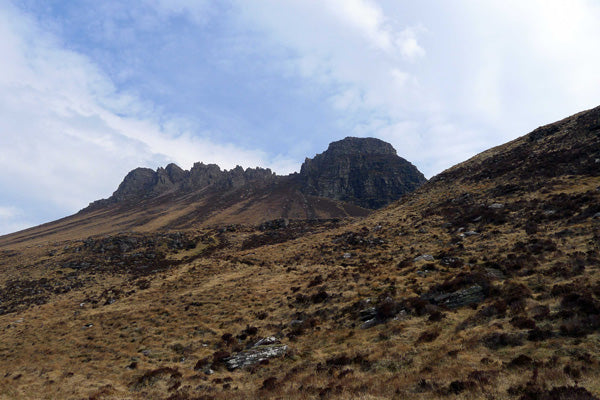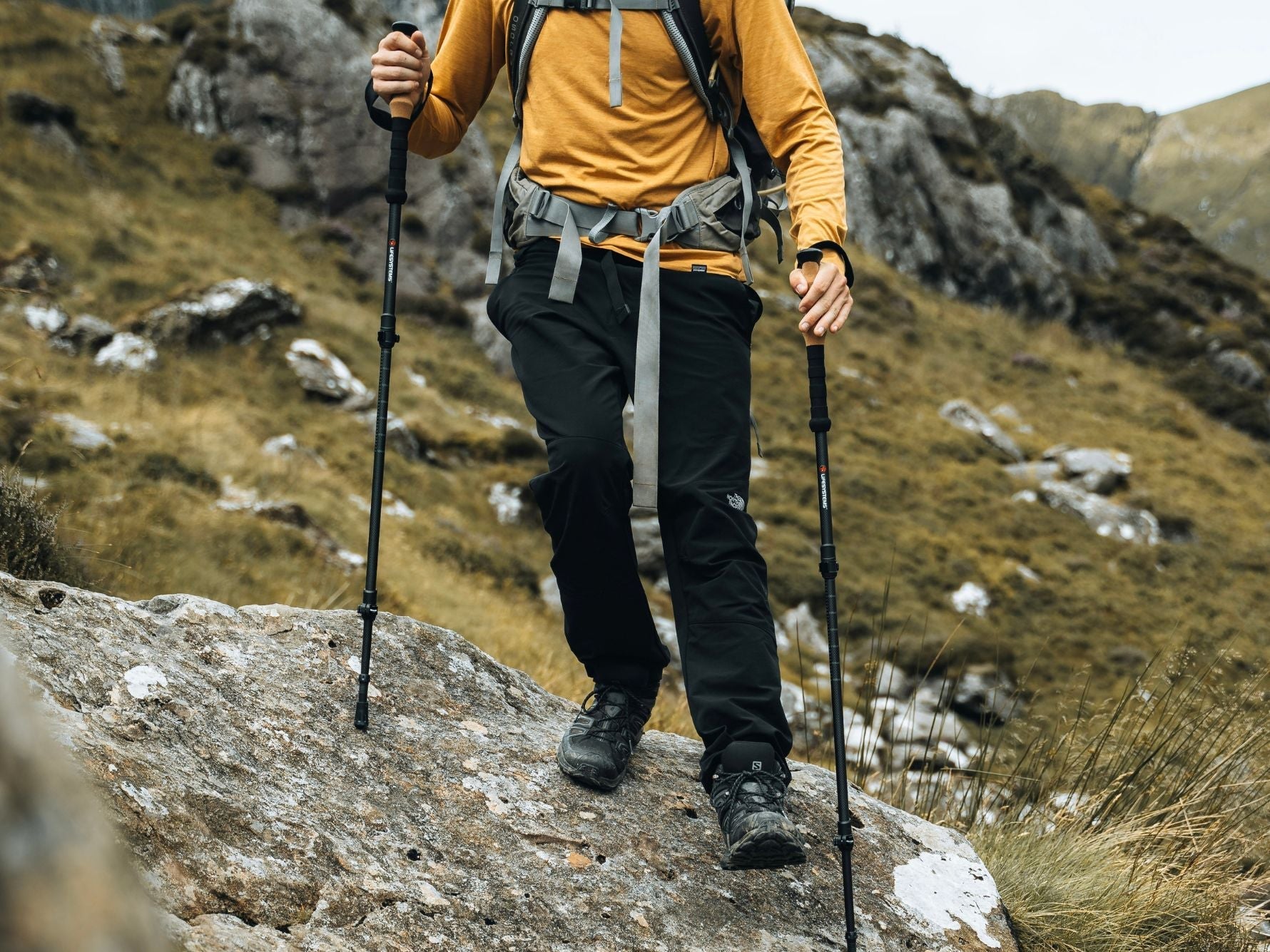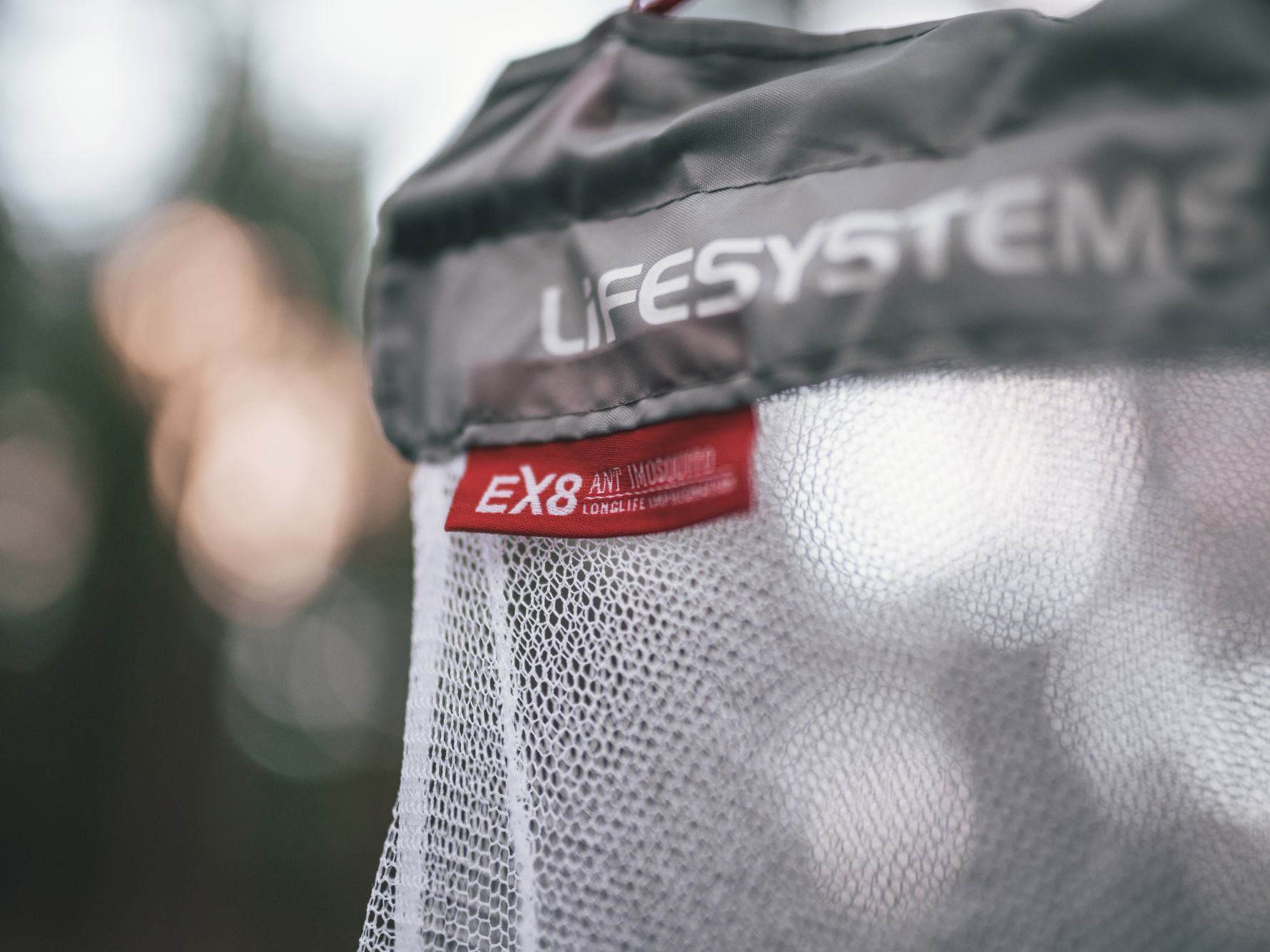Quickfire Scottish: a guide to the mystery of Highland mountain names by Dan Aspel
- Adventurers
- Blog


Stac Pollaidh, the celebrated (and diminutive) peak in Scotland’s far north whose name means “the stack at the pool”.
In a recent blog, I covered a few quick basics about Welsh mountain names. This time I’m going to turn the attention north of the border to the grand and wild Scottish Highlands - a place of extraordinary upland beauty (fleeting and capricious though it can be). This is a different proposition in a number of ways, not least because the population of Scots Gaelic speakers is far lower than those who actively speak Welsh.
The 2011 census showed that just over 57,000 people - most of them residents of the Outer Hebrides, and amounting to barely over 1 per cent of Scotland’s total population - could speak the language. We’re therefore in the curious situation of having to pronounce and understand many thousands of hill names that the vast majority of people cannot claim conclusive knowledge of, and whose origins themselves may be the source of much conjecture and even controversy.
With that in mind, I’m not going to focus on how to pronounce
Creag Meagaidh (“Craig Meggy”), Ladhar Bheinn (“Ladder Vein”) and Sgurr nan Ceathreamhnan (“Skurr nan currum-none”). To get your mouth around those fiendish morsels I’ll direct you to the excellent audioclips found on the specific peak pages of walkhighlands.co.uk.
Instead - and on the understanding that conversation with local walkers, mountaineering instructors, bunkhouse owners and climbing club hut users will likely be enough to discover the pronunciation of each hill as you climb them - I’m going to give you a handy glossary of the most common Scottish mountain words. Hopefully they will help reveal the nature of each peak in a fresh way, and thus fix the character of each one more firmly in your mind.
As way of example, consider this: Cairn Gorm merely means “blue cairn”. This makes it a surprisingly misleading and reductive name for the entire range / National Park in which it sits. Especially when you consider that the region was originally known in gaelic as Am Monadh Ruadh - or “the red mountain-land”, so called for the pinkish hue of the Cairngorm granite. The original name was therefore, most would agree, much more romantic, and gave a more poetic impression of the place is it was and as it remains today. There’s therefore much to be gained from an understanding of Scotland’s gaelic place names.
A few mountain words...
Aonach: a ridged summit with steep sides (e.g. Glen Coe’s Aonach Eagach, the “notched ridge”).

A southerly panorama from the western end of the Aonach Eagach ridge.
Beinn / Ben: Simply the most common gaelic word for “hill”. It therefore appears more than a thousand times across OS maps of Scotland (and features in the names of 30 of Scotland’s highest 100 peaks!).

A wintery Ben Nevis seen from a Glen Coe summit to the south.
Bidean: a mountain with a sharp point or pinnacle for its summit, often applied to peaks that are otherwise large and sprawling such as Glen Coe’s mighty Bidean nam Bian (“peak/chief of the mountains”).

The view upwards to the sublimely minimalist summit of Bidean nam Bian.
Monadh: simply means “mountain” and shares the same linguistic origin as the Welsh word “mynydd” and the Latin word “mons”.
Pap: has Norse origins and means “breast” or “nipple”. Think of the rounded Pap of Glencoe (and try not to blush next time you see it).
Sail: a gaelic word meaning “heel”, and denoting a long slope which ends a chain of peaks, such as Sail Leath (the “grey heel”) at the end of An Teallach (which, incidentally, means “the forge” or “the anvil”).
Sgorr: a rock-topped peak.
Sgurr: a jagged and rocky peak, of real mountaineering quality. Think of the number of Sgurrs which dominate Skye’s Cuillin ridge...
Stob: literally means a “post” or “short stick” and tends to mean a stubby summit in the Cairngorms, but contrarily is given to sharper peaks in Lochaber and the west.
A handful of colours...
Ban: White
Buidhe: Yellow
Dearg: Red / crimson
Dubh: Black

The frozen waters of the Dubh Loch (“black loch”) with the popular winter climbing cliffs of Creag an Dubh-loch behind).
Fionn: Fair / light-coloured
Glas: Greyish green
Gorm: Blue or azure
Liath: Grey
Ruadh: Soft brown or russet
A few popular hills...
Ben Alder: although an extremely old name, and one confused by many minglings of pronunciation and interpretation, it likely means “hill of the water of rock”. A fitting name for a peak whose streams reach outwards to both the east and west coasts of Scotland.
Ben Nevis: a chilling (though not unquestioningly accepted) translation of this name is “the venomous (or evil) one”. Easy to believe if you’ve ever been caught on its treacherously encroached summit in a whiteout.

Ben Nevis seen from its eponymous Glen in the last light of a spring evening.
Beinn Dorain: of the handful of options here (including “hill of the otter” and “mountain of the streams”), the most appealing is surely “mountain of the pain” or “anguish”. Having personally walked/scrambled up its absurdly steep western slopes for “a laugh”, I can firmly attest to its suitability.

View from the summit of Beinn Dorain.
Ben Lomond: likely means “beacon hill” or “hill of the blaze of light”. Easy to believe considering its great bulk sits on the southern limits of the main highland range, making it a popular and highly visible landmark.
Creag Meagaidh: means “the crag at the bog”. Although a rather grotty name in English, it’s a truly magnificent mountain, boasting some of the finest winter climbing in Scotland and (thanks to the boggishness) a tremendous range of biodiversity too.

The cloudy wilds of Creag Meagaidh’s inner crags.
Suilven: a heart-stopping peak, to be sure. However, the origins of its name are not certain. Perhaps the most logical is that it’s of Norse origin and means “pillar mountain”.

The fugitive beauty that is Suilven, in the far north county of Sutherland.
If you’ve enjoyed reading the above, then I cannot recommend highly enough the superb “Scottish Hill Names: Their origin and meaning” by Peter Drummond. It explains much of what I’ve touched on here in far greater and more satisfying detail, and is one of the most treasured items on my mountain bookshelf.

A superb purchase for any lover of the Scottish outdoors.
Please also make sure to visit the Lifesystems Facebook page and Twitter feed to share your own experiences and interpretations of Scottish mountain names.
Until next time...
Dan
> Dan Aspel is a journalist and Mountain Leader. You can find him at www.danaspel.com
> Visit www.lifesystems.co.uk to find a host of kit and equipment for your next mountain adventure.



